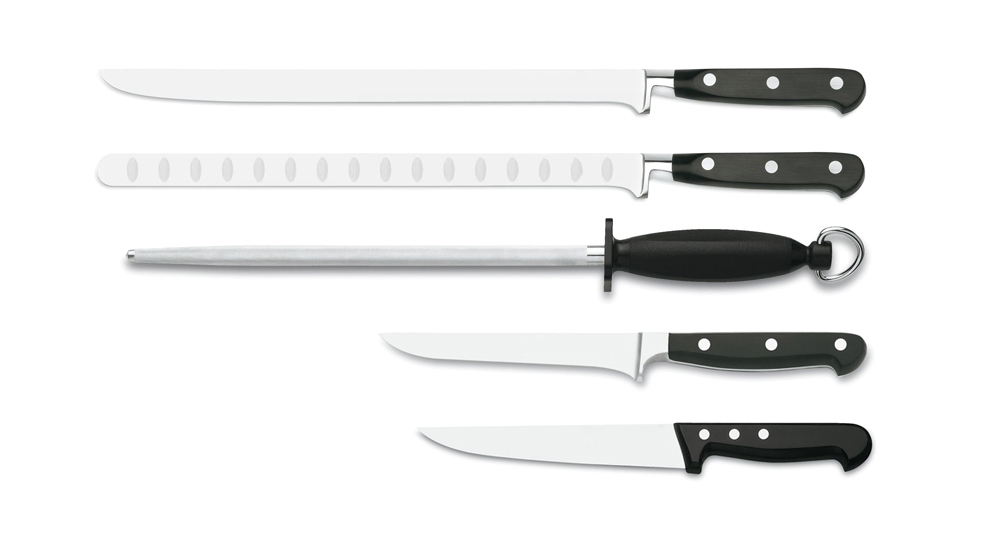Yes, knives in the plural, because to cut a ham correctly we need at least three different knives.
A week ago, we mentioned in this blog that there are differences between ham cut with a machine or with a knife. In that entry, we mentioned the importance of having the right tool to cut in the best way with the least risk to our ham. So, the time has come to talk about these affordable tools.
Ham knife
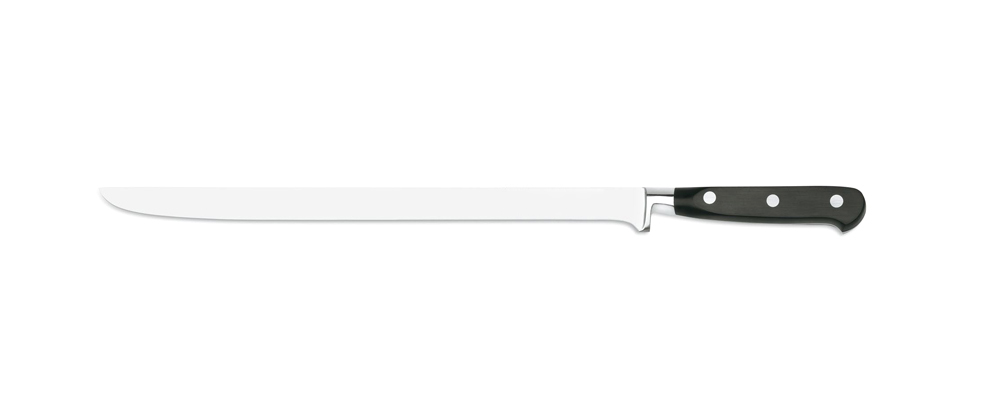
We are going to start with what everyone pictures when this topic comes up: the ham knife. It is doubtlessly the most important of the three, and it is probably most subject to the cutter’s whim.
The traditional ham knife is a knife with a long blade, thin, smooth and with a sharp tip. Along with the flexibility of the blade, four more characteristics define this tool.
Flexibility
This tool must be flexible, although not excessively so. It depends a lot on each person’s style of cutting and the hardness of the ham. The more cured the ham, the less flexible the blade should be. As it is not usual to have more than one ham knife at home, perhaps it would be ideal to have one with medium flexibility.
Length and width of the blade
Although it is true that it should have a long blade to make sure that the whole surface area of the cut is covered, each of us will find the right size for our style in blades between approximately 24 and 30 cm. Although some blades exceed 30 cm, this is not the norm. Roberto González Santalla, professional cutter, says, “I have 33 cm knives and this size does nothing for me (they don’t even fit in some holders) so the standard size is 28-30 cm, I think that’s about right.” On the other hand, the usual width is between 10 and 30 mm, also subject to personal taste rather than functional issues. A wider knife would make it hard to extract slices of an appropriate size.
Smooth or pitted
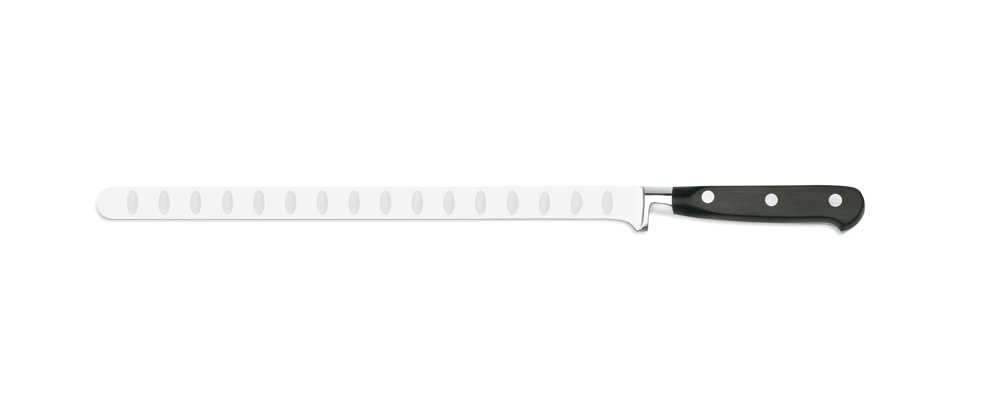
Although the traditional ham knife usually has a smooth blade, it is becoming increasingly common to find a pitted blade. This refers to a series of hollows along the knife. According to Roberto González, although he acknowledges that he does not see an excessive difference, “for the cutter community, the pitted knives help the slice slide off the knife, making the work easier”. In turn, Luz María Zamorano, professional cutter, she “likes it to be pitted, and with a rounded tip to avoid pricking”.
Sharp or rounded tip
The tip is a part of the knife that, for many cutters, does not add anything and can cause accidents or even break covers if not transported correctly. The round tip, typical of salmon knives, is increasingly seen among professional cutters.
Handle
For the cutting professionals, perhaps this is one of the most important variables, because if you have to cut for several hours, it is very important that it is comfortable and safe. In her case, Luz María Zamorano prefers “a handle that is a little bit wide and rough or non-slip,” although one of the things that she highlights, just like her colleague Roberto González, is that the knife “is well balanced.”
It is very important to use this knife only for what it is designed, in other words, for cutting thin slices of ham. For the rest of the process, we will use the following utensils.
Stripping knife
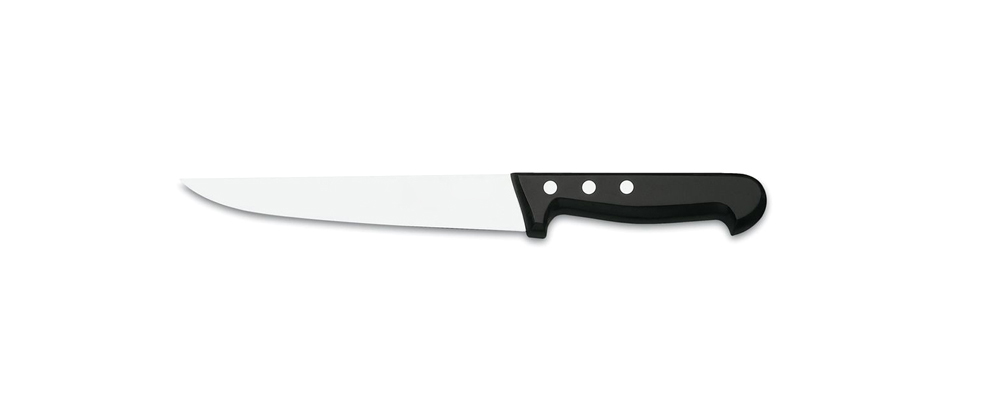
The second knife required to cut a ham properly is the stripping knife. Known in the Spanish kitchen as an onion knife, it is between 18 and 20 cm long, with a wide, firm blade. In this case, the blade should not be flexible, as it applies quite a lot of force, above all in hams that are sold with a skin or crust, as mainly found at Jamón de Teruel DOP. We also use it to clean the grease from skinless salted hams (V-cut or serrano cut).
Deboning knife
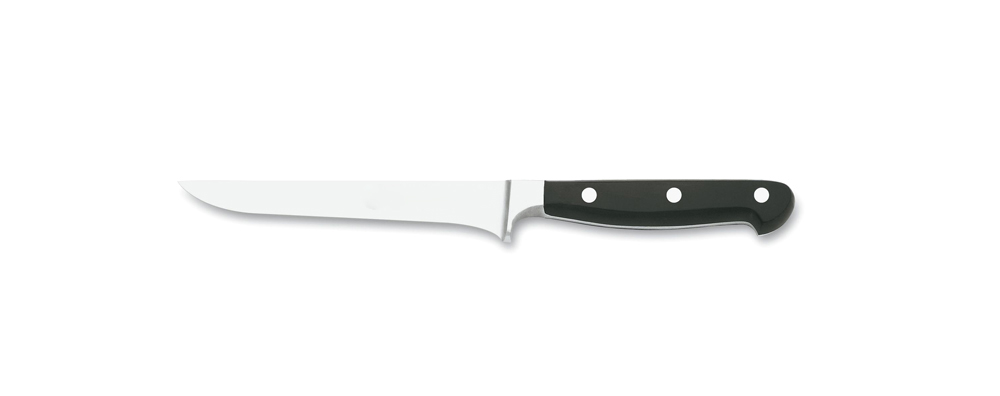
Although not difficult to find, this knife is more unusual to come across in a home. This is a 15 cm knife, with a rigid, quite narrow blade, ending in a sharp tip, with a rough handle. If you have this knife, you don’t need the stripping knife for V-shaped salted hams, although its main job is to clean the lean part of the ham and to mark the bones to keep the cut straight.
Sharpening steel
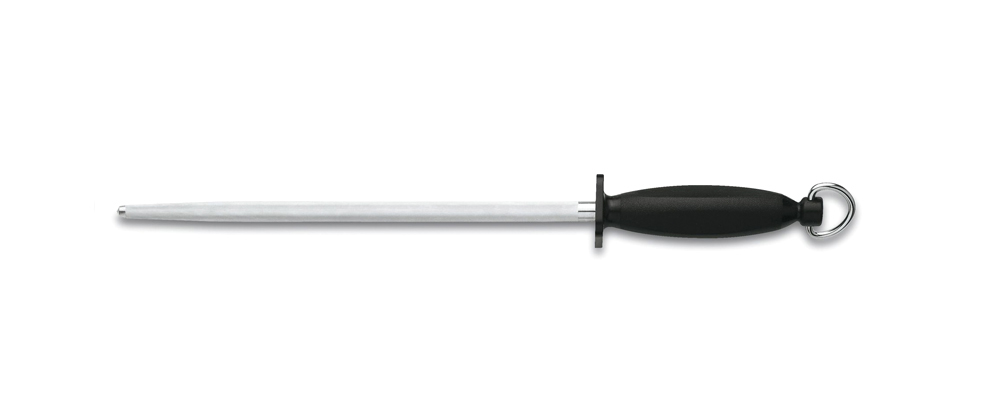
Although this is not a knife, we think it is essential to mention the sharpening steel (although it might be made of ceramic or with a diamond finish). This tool is not designed to sharpen knives but to hone the cutting, in other words to refine, flatten or smooth off the blade. All the knives we have talked about should always be accompanied by a good sharpening steel.
We hope that this brief post is helpful when choosing the right tools to enjoy your ham in the best possible way.


